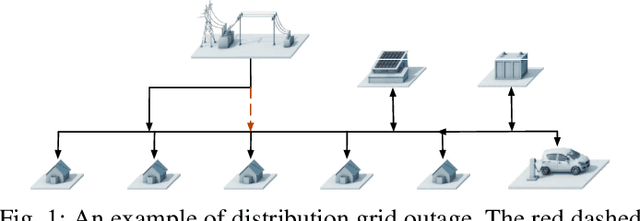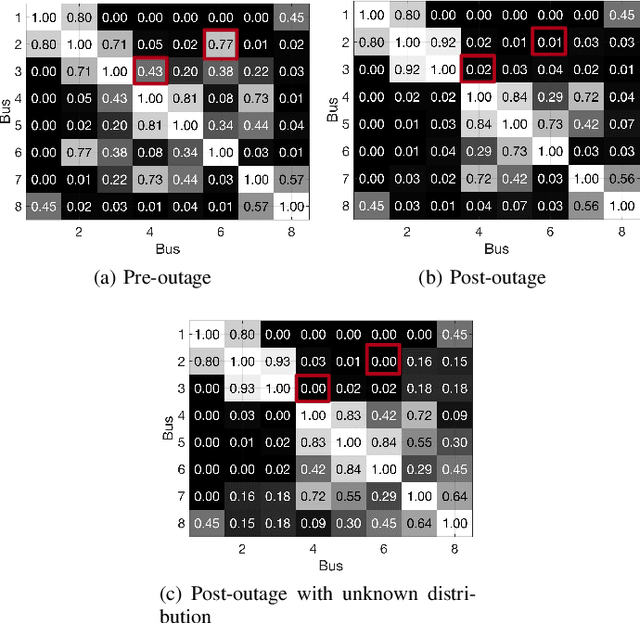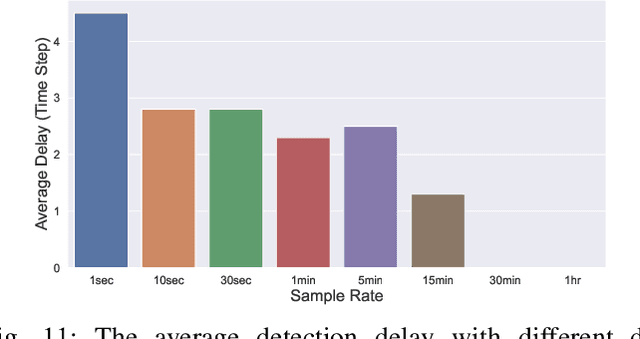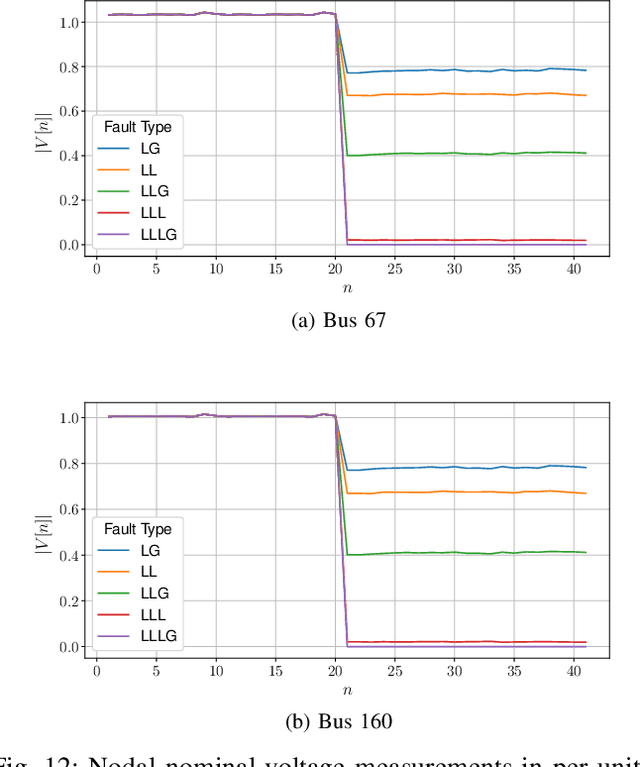Chin-woo Tan
Quick Line Outage Identification in Urban Distribution Grids via Smart Meters
Apr 01, 2021



Abstract:The growing integration of distributed energy resources (DERs) in distribution grids raises various reliability issues due to DER's uncertain and complex behaviors. With a large-scale DER penetration in distribution grids, traditional outage detection methods, which rely on customers report and smart meters' last gasp signals, will have poor performance, because the renewable generators and storages and the mesh structure in urban distribution grids can continue supplying power after line outages. To address these challenges, we propose a data-driven outage monitoring approach based on the stochastic time series analysis with a theoretical guarantee. Specifically, we prove via power flow analysis that the dependency of time-series voltage measurements exhibits significant statistical changes after line outages. This makes the theory on optimal change-point detection suitable to identify line outages. However, existing change point detection methods require post-outage voltage distribution, which is unknown in distribution systems. Therefore, we design a maximum likelihood estimator to directly learn the distribution parameters from voltage data. We prove that the estimated parameters-based detection also achieves the optimal performance, making it extremely useful for fast distribution grid outage identifications. Furthermore, since smart meters have been widely installed in distribution grids and advanced infrastructure (e.g., PMU) has not widely been available, our approach only requires voltage magnitude for quick outage identification. Simulation results show highly accurate outage identification in eight distribution grids with 14 configurations with and without DERs using smart meter data.
Unbalanced Three-Phase Distribution Grid Topology Estimation and Bus Phase Identification
Oct 09, 2018



Abstract:There is an increasing need for monitoring and controlling uncertainties brought by distributed energy resources in distribution grids. For such goal, accurate three-phase topology is the basis for correlating and exterminating measurements in unbalanced distribution networks. Unfortunately, such topology knowledge is often unavailable due to limited investment, especially for secondary distribution grids. Also, the bus phase connectivity information is inaccurate due to human errors or outdated records. For this challenge, we utilize smart meter data at different phases for an information-theoretic approach to learn the structures. Specifically, we convert the system of three unbalanced phasors into symmetrical components, namely the positive, negative, and zero sequences. Then, we prove that Chow-Liu algorithm can find the optimal topology by utilizing power flow equation and the conditional independence relationships implied by the radial three-phase structure of distribution grids with the presence of incorrect bus phase labels. At last, by utilizing Carson's equation, we prove that the bus phase connection can be correctly identified using voltage measurements. For validation, we extensively simulate on IEEE $37$- and $123$-bus systems using real data from PG\&E, ADRES Project, and Pecan Street. We observe that the algorithm is highly accurate for finding three-phase topology in distribution grids even with strong load unbalancing condition and DERs. This ensures close monitoring and controlling DERs in distribution grids.
 Add to Chrome
Add to Chrome Add to Firefox
Add to Firefox Add to Edge
Add to Edge